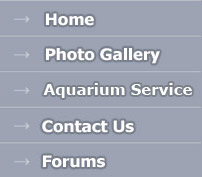


Product Search |
Products |
||||||||||||||||||||||||||||||||||||||||||
|
Saltwater Ich (Cryptocaryon) Life CycleCryptocaryon Biological CycleThe Saltwater Ich or White Spot Disease (Cryptocaryon) parasite has 4 distinct phases in its life. (See Graphic below.)
Most (wild captured) fish carry the Cryptocaryon parasite in the their gills in the Tomont Stage 1. A vast majority of Saltwater Ich outbreaks occur when new fish are introduced into an aquarium. The stress generated by capture and shipping is one of the main causes of the cysts in the gills being released, generating Trophont Stage 2. The gill mucus encasing the Cryptocaryon parasite in the Tomont Stage 1 renders most, if not all treatments, virtually ineffective at this stage. Hyposalinity (Osmotic Shock Therapy) and chemical treatments are most effective when the Tomites (the actual parasites) are most vulnerable, during their free swimming stage. Hyposalinity literally explodes the Cryptocaryon cysts in Trophont Stages 2 & 4, exposing the Tomites to both chemical and further Hyposalinity treatments. |